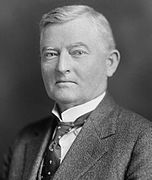
Back Wahlen zum Repräsentantenhaus der Vereinigten Staaten 1930 German Elecciones a la Cámara de Representantes de los Estados Unidos de 1930 Spanish Élections américaines de la Chambre des représentants de 1930 French 1930년 미국 하원의원 선거 Korean
| ||||||||||||||||||||||||||||||||||||||||||||||||||||||||||||||
All 435 seats in the United States House of Representatives 218 seats needed for a majority | ||||||||||||||||||||||||||||||||||||||||||||||||||||||||||||||
|---|---|---|---|---|---|---|---|---|---|---|---|---|---|---|---|---|---|---|---|---|---|---|---|---|---|---|---|---|---|---|---|---|---|---|---|---|---|---|---|---|---|---|---|---|---|---|---|---|---|---|---|---|---|---|---|---|---|---|---|---|---|---|
| ||||||||||||||||||||||||||||||||||||||||||||||||||||||||||||||
 Democratic hold Democratic gain Republican hold Farmer–Labor hold | ||||||||||||||||||||||||||||||||||||||||||||||||||||||||||||||
| ||||||||||||||||||||||||||||||||||||||||||||||||||||||||||||||
The 1930 United States House of Representatives elections were elections for the United States House of Representatives to elect members to serve in the 72nd United States Congress. They were held for the most part on November 4, 1930, while Maine held theirs on September 8. They occurred in the middle of President Herbert Hoover's term.
During the election cycle, the nation was entering its second year of the Great Depression, and Hoover was perceived[2][3] as doing little to solve the crisis, with his personal popularity being very low. His Republican Party was initially applauded for instituting protectionist economic policies, which were intended to limit imports to stimulate the domestic market; however, after the passage of the heavily damaging Smoot-Hawley Tariff, a policy that was bitterly opposed by the Democratic Party, public opinion turned sharply against Republican policies, and the party bore the blame for the economic collapse.
While the Democrats gained 52 seats in the 1930 midterm elections, Republicans retained a narrow one-seat majority of 218 seats after the polls closed versus the Democrats' 216 seats; however, during the 13 months between these elections and the start of the 72nd Congress,[4] 14 members-elect died (including incumbent Speaker Nicholas Longworth), and the Democrats gained an additional three seats in the special elections called to fill these vacancies, thus gaining control of the House (they held a 219–212 advantage over the Republicans when the new Congress convened).[4][5]
This was the first of four consecutive Depression-era House elections in which Democrats made enormous gains, achieving a cumulative gain of 174 seats. Over the ensuing 64 years (until the 1994 midterm elections), House Republicans would be in the minority for all but four years, winning majorities only in 1946 and in 1952.
Cite error: There are <ref group=lower-alpha> tags or {{efn}} templates on this page, but the references will not show without a {{reflist|group=lower-alpha}} template or {{notelist}} template (see the help page).
- ^ "Election Statistics, 1920 to Present". History, Art & Archives, U.S. House of Representatives. Retrieved November 29, 2018.
- ^ "Republicans Lay Defeat to Slump". The New York Times. November 6, 1930. Retrieved June 15, 2017.
- ^ Carlisle MacDonald (November 7, 1930). "French Say Slump Upset Republicans". The New York Times. Retrieved April 18, 2014.
- ^ a b Ritchie, Donald A. (November 3, 2010). "A Look Back At The Midterm Election Of 1930". All Things Considered (Interview). Interviewed by Robert Siegel. Washington, D.C.: NPR. Retrieved July 25, 2019.
- ^ "The Opening of the 72nd Congress: December 07, 1931". Historical Highlights. Washington, D.C.: Historian, Clerk of the U.S. House. Retrieved July 25, 2019.
© MMXXIII Rich X Search. We shall prevail. All rights reserved. Rich X Search

